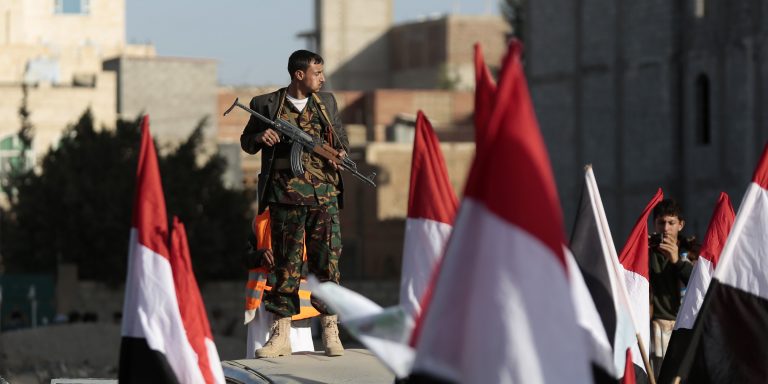INTELBRIEF
March 28, 2018
IntelBrief: Missile Games

- On March 25, Yemeni Houthi rebels fired seven ballistic missiles into Saudi Arabia.
- The Houthis fired the Burkan missiles at four different cities: Riyadh, Jazan, Najran and Khamis Mushait.
- For the first time, a person was killed by fragments of a missile, and two others injured, with Riyadh accusing Iran of providing the missiles.
- Saudi officials say all seven missiles were intercepted by its Patriot defense systems, but video shows at least two 1990’s-era Patriots malfunctioning.
.
The war between Houthi rebels and the Saudi-backed coalition in Yemen marked its 3rd year on March 22. It is difficult to overstate the scale of human suffering of the Yemeni people, a plight that is directly related to the country’s perpetual state of conflict. After the March 25 ballistic missile launches from Yemen into Saudi Arabia, this dire situation can only worsen. The risk of Saudi retaliation against Iran, whom Riyadh accuses of supplying the missiles to the Houthi rebels, also becomes more likely.
The seven ballistic missiles were fired at four Saudi cities: four towards Riyadh, two towards Jazan, and one each at Najran and Khamis Mushait. As with previous launches, the missiles were Burkan missiles with a 1000km range and a separating warhead. These missiles are based on Qaim Iranian Scuds but are not the crude Scud short-range missiles of earlier years. Those missiles were effectively countered by the PAC-2 Patriot missile system that the United States used to great fanfare in the 1991 Gulf war, and which Saudi Arabia has subsequently purchased. These 1990’s era PAC-2 systems rely on fragmentation to destroy incoming missiles and struggle to intercept relatively more advanced missiles. Video showed two PAC-2 missiles malfunctioning before intercepting their targets. The newer PAC-3, which Riyadh has also purchased more recently, is designed to intercept missiles such as the Burkan.
The technical specifications matter because it is leading to an arms race between Saudi Arabia and Iran, with the war in Yemen caught in the crosshairs. The focus is now on how to counter what is a credible missile threat to Saudi cities from inside Yemen. Three years of intensive air strikes have done little to reduce the threat of mobile missile launches but not for lack of trying; air strikes have killed thousands of Yemeni civilians, leading to international condemnation but continued arms sales. Both the U.S. and U.K. support the Saudi campaign, agreeing that it is needed to counter what they view as increasing Iranian aggression and influence.
During a March 26 press conference, Saudi Defense spokesman Turki al-Malki said the missiles had been smuggled into Yemen from Iran. He added that his country would ‘reserve the right to respond against Iran at the right time and right place,’ as such ballistic missile attacks are against international law. Saudi officials say that one Egyptian was killed by missile fragments that crashed into his residence in Riyadh, and two more were injured in the same house. This marks the first time in the current conflict that someone has been killed in Saudi Arabia by these attacks. Riyadh will retaliate with more airstrikes against the Yemeni capital Sanaa and other cities, a cycle that has only intensified after every such ballistic launch. Meanwhile, the Saudi end goal in Yemen has not been realized; in fact, Iran’s military influence in Yemen has only increased—and the humanitarian crisis continues unabated.
.
For tailored research and analysis, please contact: info@thesoufancenter.org
[video width="960" height="540" mp4="https://thesoufancenter.org/wp-content/uploads/2018/03/Final-Edit-1-161.mp4" poster="https://thesoufancenter.org/wp-content/uploads/2018/03/AP_17339565495932.jpg"][/video]